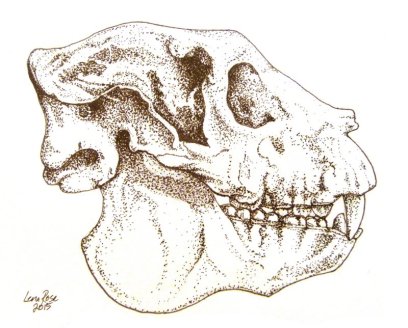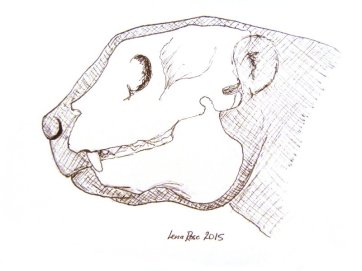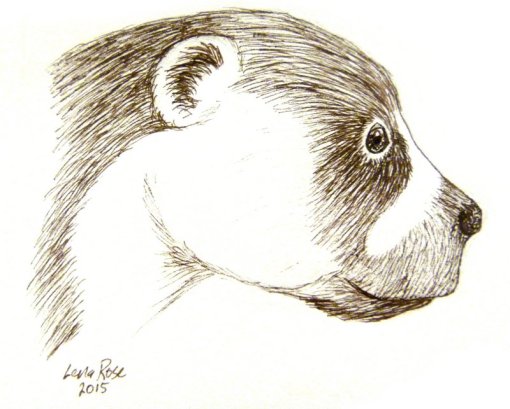
Two thumbs up for lemurs!
Did you know that there is a World Lemur Festival? This is the first year it’s being held, from October 29th to 31st. I hope that this becomes a regular event, because lemurs are definitely one of my favorite living vertebrates. I even have a World Lemur Festival shirt…that is how excited I am about this (my awesome husband got it for me as a surprise). So, I couldn’t let the first festival slip by without at least a quick lemur illustration!
I decided to do some sketches of Archaeoindris fontoynontii, which is one of the largest species of subfossil lemurs. What’s a subfossil? Well, fossils are defined as “any evidence of ancient life that is ≥10,000 years old.” The 10,000 years old part may seem a little bit arbitrary, but it’s based on our division of the geologic time scale. Currently, we are in the Holocene Epoch, which is a subdivision of the Quaternary Period. The Holocene goes back about 10,000 years, more or less, so a general rule of thumb is that for anything to be considered a fossil, it must be pre-Holocene. When confronted with the remains of extinct animals like Archaeoindris that are less than 10,000 years old (Archaeoindris which is believed to have gone extinct around 2,300 years ago), we call them subfossils to get around the condition of being more than 10,000 years old.
Like living lemur species, all subfossil lemurs are found only in Madagascar. There are at least 17 recognized species of extinct subfossil lemurs from 5 different families. The common nicknames for the extinct families are the monkey lemurs, sloth lemurs, koala lemurs, and giant aye-ayes, along with one extinct member of the living family, Lemuridae. Archaeoindris, the subject of today’s illustrations, belonged to the family of sloth lemurs (Palaeopropithecidae) and is the largest known lemur to have ever lived. It is estimated they reached the size of gorillas and weighed up to ~180 kg (~400 lbs). To put this size into perspective, the largest living lemur, the Indri, usually weighs around 8 kg (~18 lbs). Although it was once thought that Archaeoindris spent most of its time on the ground like the extinct giant ground sloth, portions of the skeleton suggest that it was an arboreal (tree-dwelling) animal, despite its large size. They were herbivorous lemurs that subsisted on seeds, leaves, and fruit.
Unfortunately, their large size and (probably) docile nature was their downfall. Like most of the now-extinct lemur species, Archaeoindris is believed to have been wiped out by the arrival of humans to Madagascar. Because of its large size, Archaeoindris would have been an easy, slow-moving target for hunters. Previous to the arrival of humans, no natural predators would have been present on Madagascar that could have posed a serious threat to such a large animal. This may have also led to island tameness, a phenomena observed in animal populations on isolated islands where wariness of potential predators (including humans) is lost because there are no predators to fear. This would have made Archaeoindris and even more defenseless against human hunting.
There are surprisingly few reference images available for Archaeoindris, either as subfossil skeletons or as reconstructions, but I’ve done my best to give you a general idea of how these giant lemurs might have looked.
Now, go celebrate the World Lemur Festival!
Interested in more references on lemurs and fossil lemurs? This is one of the best books I’ve found on lemurs (focusing on living species, but with a summary of subfossil taxa AND basic geologic history of Madagascar) with lots of great illustrations:
Mittermeier, R. A., et al. (2010). Lemurs of Madagascar. Illustrated by S.D. Nash (3rd ed.) Conservation International, 767 p.
There’s a LOT of interesting papers on living and extinct lemurs, but here’s one focusing on the sloth lemurs:
Godfrey, L. R. and Jungers, W. L. (2003), The extinct sloth lemurs of Madagascar. Evolutionary Anthropology, 12: 252–263.


